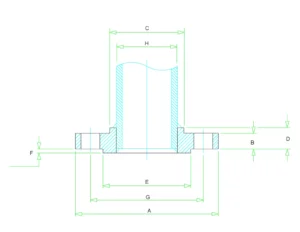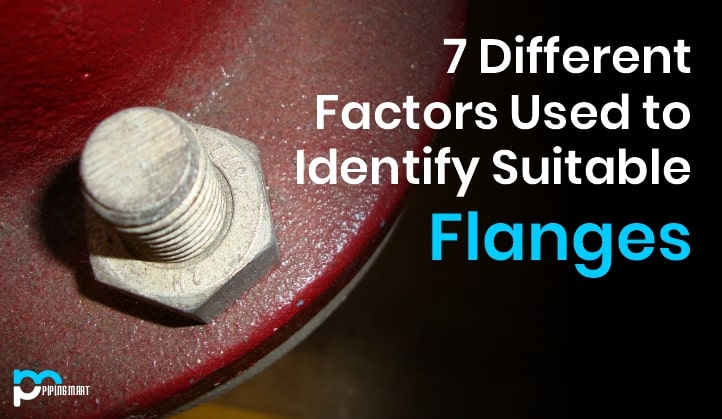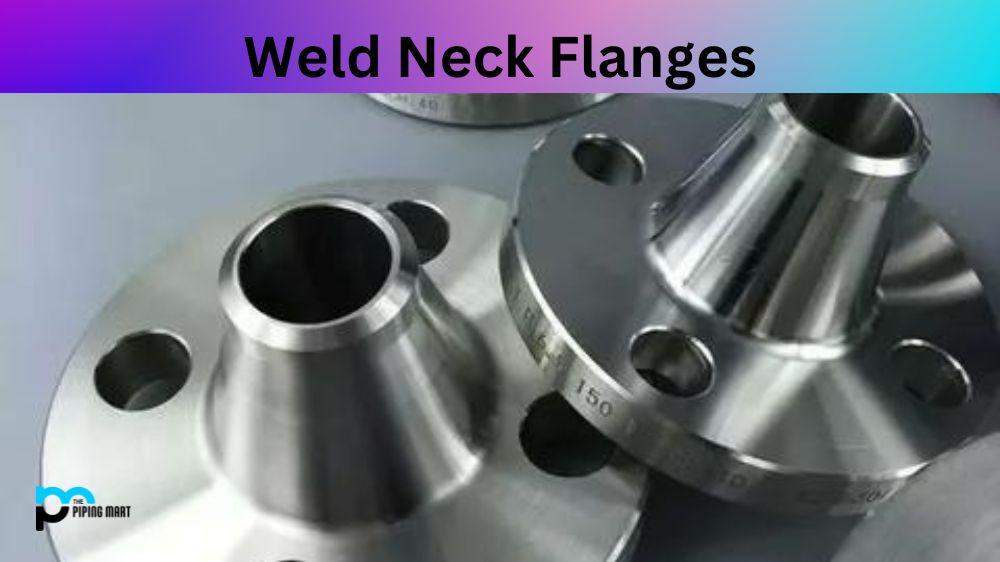Slip-on flanges offer simple installation and ensure a stable connection between two pipes, but their functionality extends beyond the surface. In this blog post, we’ll explore the basics of slip-on flanges, including their definition, applications, welding methods, and variations.
What is Slip On Flanges?
Slip-on flanges are a type of flange that slides over the end of piping and is then welded in place. They are easy to install and are commonly used in low-pressure applications where welding may not be required. With a design featuring a slightly larger inner diameter than the outer diameter of the pipe, slip-on flanges facilitate smooth fluid or gas flow. They find widespread use in petrochemicals, oil and gas, and water treatment plants. Available in various materials, including stainless steel, carbon steel, and alloy steel, slip-on flanges offer flexibility to meet different strength and corrosion resistance requirements.
Slip-On Flanges Uses
Slip-On Flanges are commonly used to connect pipes in piping systems, particularly in low-pressure environments or for easy assembly and disassembly needs. They find applications in industries like oil and gas, petrochemical, and water treatment. Their straightforward design allows quick installation by sliding over the pipe and welding in place, ensuring a smooth flow of fluids or gases. With material options like stainless steel, carbon steel, and alloy steel, Slip-On Flanges provide a versatile and cost-effective solution for connecting pipes and equipment in various industrial settings.
Slip On Flanges Welding
Slip-on flanges can be connected with either welding or bolting methods. Welding is usually preferred when dealing with higher-pressure applications since it provides more excellent safety than bolting methods due to its ability to contain better potential leaks caused by pressure buildup within the system. Welding requires special tools and equipment, such as an arc welder or TIG welder for stainless steel materials, so it should only be done by experienced personnel who understand how to properly weld these components without compromising their integrity or safety features.
Slip On Flanges Types
Slip-on flanges come in various sizes, styles and materials depending on application requirements and user preferences. Commonly available materials include carbon steel, stainless steel and aluminium alloys which all have different properties that determine their suitability for certain types of pipelines or installations based on factors such as temperature range, corrosion resistance levels etc. Additionally, SOF’s come in different shapes, such as round or oval, depending on application needs and varying thicknesses ranging from 6mm up to 100mm thick, depending upon customer specifications and requirements.
Slip On Flanges Dimensions
| Size in Inch | Size in mm | Outer Dia. | Flange Thick. | Hub OD | Flange Length | RF Dia. | RF Height | PCD | Socket Bore | No of Bolts | Bolt Size UNC | Machine Bolt Length | RF Stud Length | Hole Size | ISO Stud Size | Weight in kg |
|---|---|---|---|---|---|---|---|---|---|---|---|---|---|---|---|---|
| A | B | C | D | E | F | G | H | |||||||||
| 1/2 | 15 | 90 | 9.6 | 30 | 14 | 34.9 | 2 | 60.3 | 22.2 | 4 | 1/2 | 50 | 55 | 5/8 | M14 | 0.8 |
| 3/4 | 20 | 100 | 11.2 | 38 | 14 | 42.9 | 2 | 69.9 | 27.7 | 4 | 1/2 | 50 | 65 | 5/8 | M14 | 0.9 |
| 1 | 25 | 110 | 12.7 | 49 | 16 | 50.8 | 2 | 79.4 | 34.5 | 4 | 1/2 | 55 | 65 | 5/8 | M14 | 0.9 |
| 1 1/4 | 32 | 115 | 14.3 | 59 | 19 | 63.5 | 2 | 88.9 | 43.2 | 4 | 1/2 | 55 | 70 | 5/8 | M14 | 1.4 |
| 1 1/2 | 40 | 125 | 15.9 | 65 | 21 | 73 | 2 | 98.4 | 49.5 | 4 | 1/2 | 65 | 70 | 5/8 | M14 | 1.4 |
| 2 | 50 | 150 | 17.5 | 78 | 24 | 92.1 | 2 | 120.7 | 61.9 | 4 | 5/8 | 70 | 85 | 3/4 | M16 | 2.3 |
| 2 1/2 | 65 | 180 | 20.7 | 90 | 27 | 104.8 | 2 | 139.7 | 74.6 | 4 | 5/8 | 75 | 90 | 3/4 | M16 | 3.2 |
| 3 | 80 | 190 | 22.3 | 108 | 29 | 127 | 2 | 152.4 | 90.7 | 4 | 5/8 | 75 | 90 | 3/4 | M16 | 3.7 |
| 3 1/2 | 90 | 215 | 22.3 | 122 | 30 | 139.7 | 2 | 177.8 | 103.4 | 8 | 5/8 | 75 | 90 | 3/4 | M16 | 5 |
| 4 | 100 | 230 | 22.3 | 135 | 32 | 157.2 | 2 | 190.5 | 116.1 | 8 | 5/8 | 75 | 90 | 3/4 | M16 | 5.9 |
| 5 | 125 | 255 | 22.3 | 164 | 35 | 185.7 | 2 | 215.9 | 143.8 | 8 | 3/4 | 85 | 95 | 7/8 | M20 | 6.8 |
| 6 | 150 | 280 | 23.9 | 192 | 38 | 215.9 | 2 | 241.3 | 170.7 | 8 | 3/4 | 85 | 100 | 7/8 | M20 | 8.6 |
| 8 | 200 | 345 | 27 | 246 | 43 | 269.9 | 2 | 298.5 | 221.5 | 8 | 3/4 | 90 | 110 | 7/8 | M20 | 13.7 |
| 10 | 250 | 405 | 28.6 | 305 | 48 | 323.8 | 2 | 362 | 276.2 | 12 | 7/8 | 100 | 115 | 1 | M24 | 19.5 |
| 12 | 300 | 485 | 30.2 | 365 | 54 | 381 | 2 | 431.8 | 327 | 12 | 7/8 | 100 | 120 | 1 | M24 | 29 |
| 14 | 350 | 535 | 33.4 | 400 | 56 | 412.8 | 2 | 476.3 | 359.2 | 12 | 1 | 115 | 135 | 1 1/8 | M27 | 41 |
| 16 | 400 | 595 | 35 | 457 | 62 | 469.9 | 2 | 539.8 | 410.5 | 16 | 1 | 115 | 135 | 1 1/8 | M27 | 54 |
| 18 | 450 | 635 | 38.1 | 505 | 67 | 533.4 | 2 | 577.9 | 461.8 | 16 | 1 1/8 | 125 | 145 | 1 1/4 | M30 | 59 |
| 20 | 500 | 700 | 41.3 | 559 | 71 | 584.2 | 2 | 635 | 513.1 | 20 | 1 1/8 | 140 | 160 | 1 1/4 | M30 | 75 |
| 24 | 600 | 815 | 46.1 | 663 | 81 | 692.2 | 2 | 749.3 | 616 | 20 | 1 1/4 | 150 | 170 | 1 3/8 | M33 | 100 |
Conclusion
In conclusion, slip-on flanges are an essential component when it comes to securely joining two pipes within any pipeline system or installation setup, whether in residential or commercial use cases. There are many different sizes and shapes available, along with other materials that must be carefully chosen according to specific needs; additionally, they can be connected using either welding or bolting methods depending upon preference/application requirements. So if you’re looking for a secure connection between your pipes, then a slip-on flange might be your best option!

Pipingmart is a B2B portal that specializes in metal, industrial and piping items. Additionally, we share the latest information and information about materials, products and various types of grades to assist businesses that are involved in this business.





